Product Description
Product Description
Agriculture Machinery Gear Box Agricultural Agri Farm Tractor Mower Bevel Digger Fertilizer Spreader Rotary Tiller Right Angle Pto Shaft Reducer Gearbox
The Agriculture Machinery Gear Box is a high-quality and durable gearbox designed for use in various agricultural applications. This gearbox is specifically engineered to meet the demands of agri-farm tractors, mowers, diggers, fertilizer spreaders, rotary tillers, and other agricultural machinery.
With its bevel gear design, this gearbox ensures smooth and efficient power transmission, allowing for optimal performance and productivity. The right angle PTO shaft reducer gearbox is built to withstand heavy-duty usage, making it ideal for demanding agricultural tasks.
Featuring a robust construction, this gearbox offers exceptional reliability and longevity, reducing the need for frequent maintenance and replacement. Its compact design allows for easy installation and integration into existing agricultural equipment.
Key Features:
- Bevel gear design for smooth power transmission
- Designed for agri-farm tractors, mowers, diggers, fertilizer spreaders, rotary tillers, and more
- Heavy-duty construction for durability
- Compact design for easy installation
Enhance the performance and efficiency of your agricultural machinery with the Agriculture Machinery Gear Box. Invest in this reliable and high-performing gearbox to maximize productivity and minimize downtime.
Product Parameters
| 1. Large output torque |
| 2. Safe, reliable, economical, and durable |
| 3. Stable transmission, quiet operation |
| 4. High modularization design, may equip with various outer power inputs conveniently. The same machine type may equip with various power motors. It is easy to realize the combination and junction between every machine type |
| 5. Form of installation: The position to be installed is not limited |
| 6. High strength, compact the box body of high strength cast iron, gear and gear shaft adopt the gas carbonization, quenching, and fine grinding process, therefore the bearing capacity of unit volume is high |
| 7. Long life: Under the condition of the correct type chosen(including choosing suitable operation parament ) normal operation and maintenance, the life of the main parts speed reducer(except wearing parts)should not be less than 20000 hours |
| 8. Low noise: Because the main parts of the speed reducer are processed, and tested critically, therefore the noise of the |
Detailed Photos
Company Profile
United Metal Products (HangZhou) Co., Ltd. is located in west coast new economic district, HangZhou, China.
Our products exported to the United States, Canada, Brazil, Germany, France, Italy, Denmark, Australia etc for more than 16 years.
We have passed certification of ISO9000, ISO14001, TS16949. etc.
We focus on metal parts including casting parts and machining parts for construction machinery, agricultural machinery, auto parts, railway parts etc.
Machining casting parts, forging parts, aluminum die casting parts etc.
Bar machining parts, shaft etc.
Bolt/nut/washer.
Welding parts, sheet metal part, bending parts etc.
Fin-type radiators.
Our vast experience includes parts ranging from 0.01kg to 1000 kg with annual volumes from 500 up to 200, 000 pieces in industries such as:
Construction – Excavators, Articulating Dump Trucks, Graders, Pavers, Wheel Loaders, Skid Steers, Asphalt Compactors
Agriculture – Tractors, Combines, Sprayers, Seeders, Implement Attachments, Planters, Air Drills, Cultivators, Balers
Material Handling – Forklifts, Reach Trucks, Order Pickers
Aerial Platforms – Scissors Lifts, Telehandlers
Rail/Transportation – Freight Trains
Forestry – Feller Bunchers
Mining – Mining Trucks
/* March 10, 2571 17:59:20 */!function(){function s(e,r){var a,o={};try{e&&e.split(“,”).forEach(function(e,t){e&&(a=e.match(/(.*?):(.*)$/))&&1
| Application: | Motor, Machinery, Marine, Agricultural Machinery |
|---|---|
| Function: | Distribution Power, Clutch, Change Drive Torque, Change Drive Direction, Speed Changing, Speed Reduction, Speed Increase |
| Layout: | Cycloidal |
| Customization: |
Available
| Customized Request |
|---|
.shipping-cost-tm .tm-status-off{background: none;padding:0;color: #1470cc}
|
Shipping Cost:
Estimated freight per unit. |
about shipping cost and estimated delivery time. |
|---|
| Payment Method: |
|
|---|---|
|
Initial Payment Full Payment |
| Currency: | US$ |
|---|
| Return&refunds: | You can apply for a refund up to 30 days after receipt of the products. |
|---|
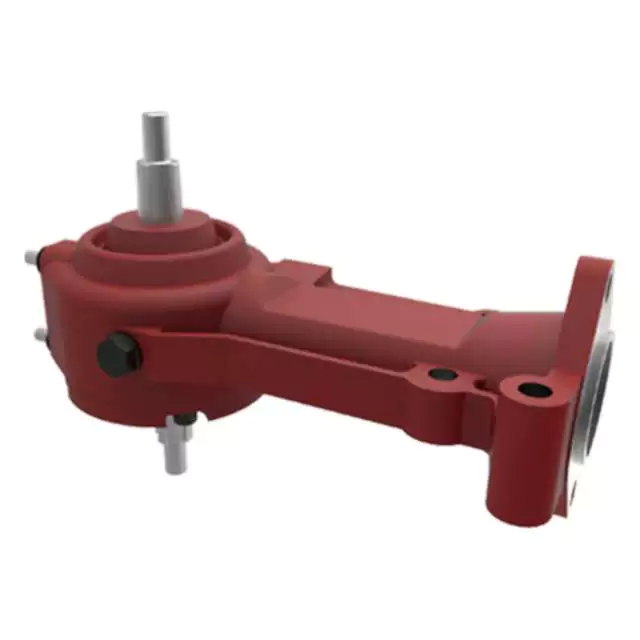
Considerations for Heavy-Duty Farming Gearboxes
Heavy-duty farming applications require robust and reliable gearboxes that can withstand high loads, harsh conditions, and frequent use. Here are the key considerations for selecting gearboxes for heavy-duty farming:
- Load Capacity: Heavy-duty gearboxes must have a high load-carrying capacity to handle the demands of agricultural machinery, such as tillers, plows, and combines.
- Material Durability: Gearboxes should be constructed from durable materials, such as hardened steel or cast iron, that can withstand the stresses and impacts associated with heavy-duty tasks.
- Sealing and Protection: Effective sealing and protection mechanisms, such as robust seals and gaskets, prevent the ingress of dirt, water, and contaminants that can cause premature wear and damage.
- Lubrication System: A reliable and efficient lubrication system is crucial for heavy-duty gearboxes to ensure proper lubrication of components under high loads and temperatures.
- Heat Dissipation: Heavy-duty applications generate significant heat. Gearboxes should have efficient heat dissipation mechanisms, such as cooling fins or oil coolers, to prevent overheating and maintain performance.
- Design and Construction: Gearbox design should incorporate reinforced housing, larger bearings, and robust gears to handle heavy loads without compromising structural integrity.
- Alignment and Mounting: Proper alignment and mounting are essential to ensure smooth and efficient power transmission. Misalignment can lead to increased wear and reduced gearbox lifespan.
- Maintenance Accessibility: Heavy-duty gearboxes should be designed for easy maintenance access. Features such as removable covers and inspection points simplify servicing and repairs.
- Compatibility: Gearboxes should be compatible with the specific machinery and tasks they will be used for. Customizable gear ratios and output shaft configurations enhance versatility.
- Reliability and Longevity: Heavy-duty gearboxes should be built to last, with quality craftsmanship and components that can withstand the demanding conditions of agricultural operations.
- Safety: Safety features, such as guards and emergency shutdown mechanisms, are essential to protect operators and nearby personnel from potential hazards.
- Environmental Considerations: Gearbox designs should consider environmental regulations and emissions standards to minimize the impact on the environment.
- Cost-Effectiveness: While heavy-duty gearboxes require a higher upfront investment, their durability and performance contribute to long-term cost-effectiveness by reducing downtime and the need for frequent replacements.
By carefully considering these factors, farmers can select the appropriate heavy-duty gearboxes that enhance productivity and reliability in their farming operations.
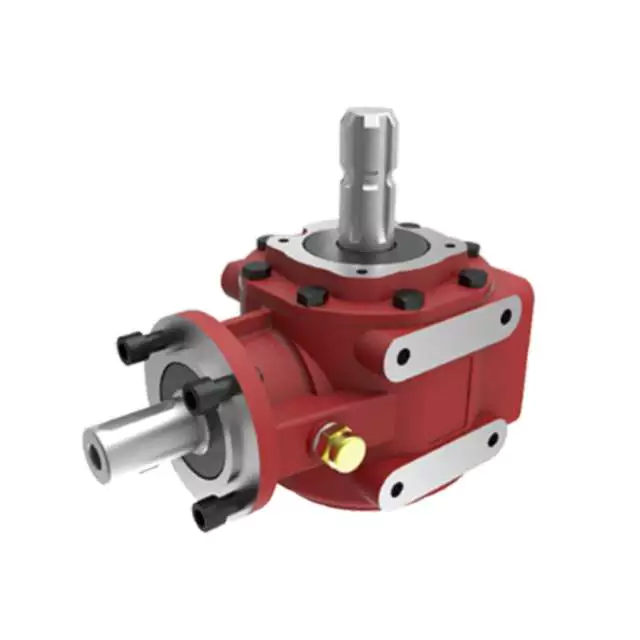
Enhancing Efficiency and Productivity in Farming Operations with Agricultural Gearboxes
Agricultural gearboxes play a pivotal role in enhancing efficiency and productivity across various farming operations. Here’s how agricultural gearboxes contribute to improving farming practices:
- Power Transmission: Agricultural gearboxes efficiently transmit power from the tractor’s engine to various implements, enabling them to perform tasks like plowing, planting, and harvesting with optimal power and torque.
- Variable Speed Control: Gearboxes allow farmers to adjust the speed of attached implements, adapting to different soil types, crop conditions, and tasks. This flexibility ensures precision and optimal performance.
- Task Specialization: With the use of different attachments and implements, one tractor equipped with a gearbox can perform a variety of tasks, reducing the need for multiple specialized machines.
- Optimized Torque: Agricultural gearboxes provide the necessary torque to overcome resistance from tough soils, vegetation, and other challenging conditions, ensuring consistent and efficient operations.
- Improved Crop Management: Gearboxes enable precise control over seeding depth, planting spacing, and fertilization, contributing to better crop management and higher yields.
- Reduced Operator Fatigue: Efficient power transmission and controlled operations reduce the physical strain on operators, enabling them to work longer hours without excessive fatigue.
- Conservation of Resources: By allowing accurate distribution of seeds, fertilizers, and other inputs, gearboxes help conserve resources and minimize waste.
- Enhanced Harvesting: Gearboxes facilitate smooth operation of harvesting equipment, such as combines and forage harvesters, resulting in efficient gathering of crops without damage.
- Time and Labor Savings: Agricultural gearboxes speed up tasks like plowing, tilling, and planting, enabling farmers to cover larger areas in less time, which is particularly crucial during planting and harvesting seasons.
- Reliability and Durability: Well-designed gearboxes are built to withstand the rigors of farming environments, reducing downtime due to maintenance or equipment failure.
Incorporating agricultural gearboxes into farming equipment significantly contributes to streamlining operations, reducing manual effort, and optimizing the use of resources. As a result, farmers can achieve higher levels of efficiency, productivity, and overall farm profitability.
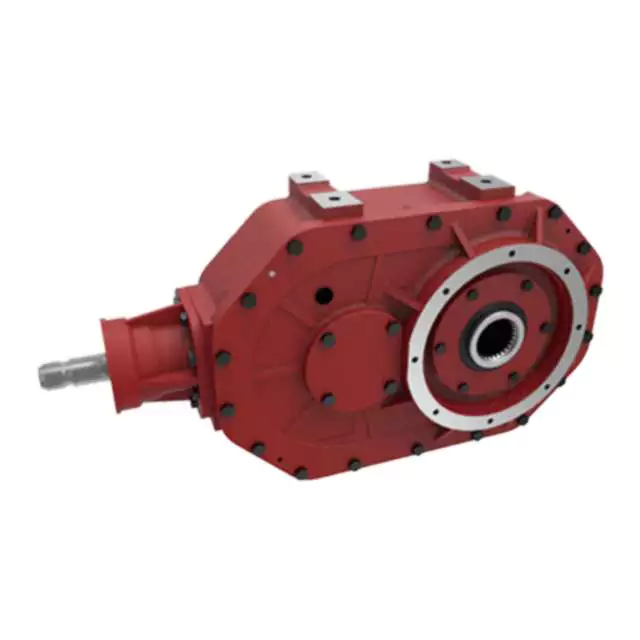
Power Transmission in Farming Equipment with Agricultural Gearboxes
Agricultural gearboxes play a vital role in facilitating power transmission within various types of farming equipment. These gearboxes are integral components that enable the transfer of rotational power from a tractor’s engine to different agricultural implements and machinery. Here’s how agricultural gearboxes contribute to power transmission:
- Speed Reduction: In many farming operations, the engine of a tractor or other power source operates at a higher speed than is suitable for the optimal functioning of agricultural implements. Agricultural gearboxes provide speed reduction by using a combination of gears with different numbers of teeth. This reduction in speed allows the machinery to operate at the required speed for efficient tasks like tilling, planting, or harvesting.
- Power Multiplication: Some agricultural tasks require a significant amount of torque to operate effectively. Gearboxes can multiply the input torque from the engine to generate higher torque at the output shaft. This is crucial for tasks such as plowing, where substantial force is needed to break up the soil.
- Directional Change: Agricultural gearboxes also allow for changes in the direction of power transmission. For instance, a tractor’s power take-off (PTO) shaft may need to transmit power at a right angle to the tractor’s engine. Gearboxes with bevel gears or other arrangements enable this change in direction, ensuring that power is properly directed to the implement.
- Power Distribution: In certain cases, power needs to be distributed to multiple components or implements. Agricultural gearboxes with multiple output shafts can distribute power to different tasks simultaneously, optimizing efficiency and productivity.
- Attachment Operation: Many agricultural implements, such as plows, seed drills, and rotary mowers, require consistent and controlled power to function effectively. Gearboxes provide the necessary power and control to these attachments, ensuring uniform operation and accurate results.
By facilitating speed reduction, power multiplication, directional changes, power distribution, and attachment operation, agricultural gearboxes contribute significantly to the overall efficiency and productivity of farming equipment. They allow farmers to adapt their machinery to various tasks, optimize power usage, and achieve better results in different agricultural operations.


editor by CX 2024-02-12
China FT200.21B.015 Master clutch slave assembly For Foton Lovol Agricultural Genuine tractor Spare Parts agriculture machinery parts with Hot selling
Problem: New
Warranty: 3 months
Relevant Industries: Equipment Restore Shops, Farms
Fat (KG): .8 KG
Showroom Area: None
Video clip outgoing-inspection: Not Accessible
Machinery Check Report: Not Offered
Marketing and advertising Kind: New Product 2571
Type: Shafts
Use: Tractors
Following Warranty Provider: Spare elements
Packaging Information: opp
Specification
| item | Master clutch slave assembly |
| Condition | New |
| Place of Origin | China,ZheJiang |
| Package size(CM) | 40*40*15 |
| Gross fat(KG) | 1 |
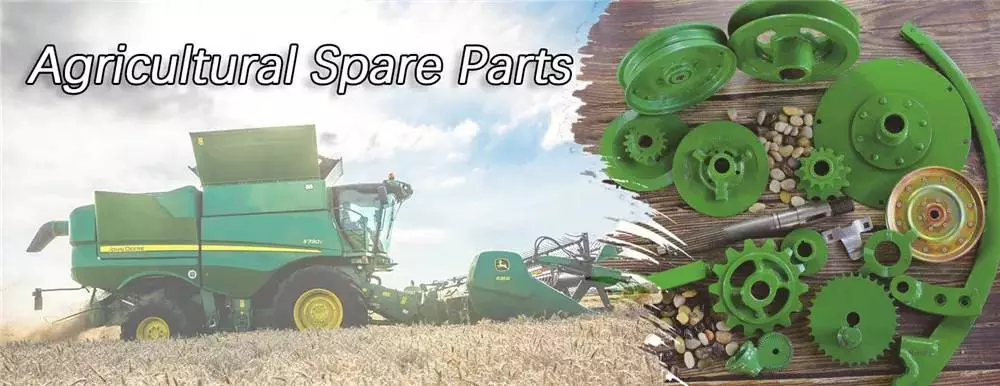
Preventative Maintenance on Tractor Parts
You should not take your tractor out of commission by replacing the parts that are not working properly. You should be proactive about maintaining your tractor parts to ensure that they work well and are of the highest quality. You should also check if the company is 10 years old or more, as this will ensure that they have enough experience to handle warranty issues and any other problems. Lastly, you should check if the tractor parts company has a good reputation. Having a long standing company that is available around the clock is a plus.
Preventative maintenance of tractor parts
Performing preventative maintenance on tractor parts will help you avoid unexpected breakdowns and enhance its efficiency. Whether you’re the sole owner of a tractor or a part-owner, you should know which parts you need and where to find them. Having spares available is also important, as they can help you solve problems quickly. Listed below are some of the parts you need to know about. These components are essential for your tractor’s engine.
To maintain your tractor’s internal components, check for wear. Lubricate internal parts regularly to reduce friction. When possible, bring your tractor to a dealer for a thorough inspection. Additionally, remember to keep the tractor’s air filter clean. Dust in the air strains the tractor’s engine, and a dirty air filter can cause a lot of damage. By following the manufacturer’s instructions for proper maintenance, you can avoid costly repairs down the road.
For oil changes, check the owner’s manual for recommended oil change intervals. Make notes in the manual about the parts you’ll need. You can also refer to the manufacturer’s PM checklist. Depending on the type of tractor you own, you may need to change the oil once a year or more often. To keep your tractor running optimally, drain old oil after every use. The same goes for hydraulic fluid. Over time, it can become contaminated with particles and water. Therefore, it’s best to change it every year.
Modern tractors use a cooling system with fans and radiators. This system operates in varying temperatures and if it breaks down, you risk damaging the engine’s core parts. In addition, you should store your tractor’s battery under climate control. A battery maintainer can be purchased at any auto parts store. It’s a great idea to regularly inspect your tractor’s engine for problems as early as possible.
Types of tractor clutches
In a modern tractor, there are many types of transmission systems, and this article compares the pros and cons of each type. The original drive system of tractors relied on a clutch to change gears and range and engage/disengage the PTO drive. The clutch was usually a two-stage design; a full depression disengaged all drive systems while a partial depression only disengaged the gearbox. Today, these systems are independent.
The friction plate is a steel plate with a splined central hub. It features annular friction facings and is held between the flywheel and pressure plate. It has splines that limit its axial travel along the gearbox’s driving shaft and dampen torsional vibrations. Single-plate clutches are most commonly used in heavy agricultural equipment. While they were initially developed as a cost-effective alternative to drum brakes, they quickly gained popularity due to their low price and ease of use.
Another type of tractor clutch is the wrap-spring. These use a special cast-iron spring. This spring is able to transmit torque to the driven plate when the tractor is operating at normal engine speed, while the clutch springs help transmit torque to the driven plate when the engine is running at high engine speeds. The wrap-spring clutches must be lubricated with light oil and should be checked for deterioration after a few years.
The advantages and disadvantages of these types of clutches are explained briefly. They are generally made from high-quality materials and contain a high copper content. They have high-friction properties and can transfer heat effectively to the engine. The friction coefficient of these types of clutches ranges from 0.33 to 0.4. As a result, they are the best choice for intensive applications. In conclusion, there are many advantages and disadvantages of each type of tractor clutch.

Types of tractor transmission gears
There are several different types of tractor transmission gear. One of the most common is hydrostatic. A hydrostatic transmission works like a standard manual transmission, and operates with a pedal. To operate a hydrostatic transmission, you simply select the gear and engine speed you want, push the pedal, and the hydraulic oil turns the gears. Because this type of transmission is clutchless, it provides smooth forward/backward operation without the need for a manual shifter.
Tractor transmissions come in several types and have different features. Some of these systems are better for certain types of work than others, and you’ll find different types depending on the size and type of your tractor. Many tractors have two types of transmissions: geared speed and power shift. Each type offers different benefits, and they vary in cost and ease of use. There’s a geared speed transmission, a synchromesh transmission, and a power shift transmission.
A CVT (continuously variable transmission) is another popular option. Like hydro, CVTs use a belt to transfer power from the engine to the wheels. These tractors can shift gears with little effort. These tractors can reach up to four speeds without the need for a clutch. Powershift transmissions are simpler and more durable than CVTs. They’re also easier to repair. But a CVT may be the better choice for your farm tractor.
Hydrostatic and power shuttle transmissions allow you to shift gears and direction without the use of a clutch. Hydrostatic transmissions are usually hydraulically actuated, which makes it easy to change gears without using the clutch. Similarly, power shuttle transmissions are great for heavy-duty forward-and-reverse shifting. In either case, the clutches are hydraulically actuated and bathed in oil.
Types of CZPT fittings
In a nutshell, there are two types of CZPT fittings: standard and grease-fill. Standard CZPTs have three to four pumps of grease per fitting. Grease-filled CZPTs tend to attract dirt, dust, and sand, which can damage moving parts. Keeping these parts clean is crucial to their long-term performance. Using a rag to wipe off excess grease is an excellent way to ensure that the seals remain as sealed as possible.
There are different types of grease-filling tools available. Some are specifically designed to clear blocked CZPTs. These tools are used to fill the CZPT fitting with grease or diesel fuel and hit the fitting with a hammer. Be sure to use high-quality fitting rejuvenators, as cheap ones are less effective. These are also harder to find than grease-filling tools. To avoid these issues, use the proper tools when servicing your tractor.
CZPT fittings are used for many different kinds of tractor parts. You may find them on lawn equipment, construction equipment, and farming equipment. If you are unsure of what type your equipment has, ask your local CZPT dealer or visit one of their 17,000 CZPT AutoCare locations. Don’t forget to regularly grease these parts for the best performance. When you don’t have time to do so, they can lead to costly repairs.
Standard CZPTs feature a dome-shaped nipple that makes it easy to spot. Flow-stop fittings feature a ball check valve that reduces backflow during lubrication. Drive-type CZPTs feature a special coupler with a cross-pin to provide a positive lock. This type of grease CZPT eliminates the need for tapping during servicing.

Preventative maintenance of tractor’s CZPT fittings
Proper grease application and regular inspections are important parts of CZPT fittings. If a CZPT becomes stuck in an opening, the ball may not be able to come out. Lubrication around CZPTs is important as grease can damage the components and cause bigger problems. A tractor’s CZPT fittings are part of the tractor’s electrical system, so it is important to replace them when they become damaged.
Grease CZPTs allow the addition of grease at the manufacturer’s specifications. These fittings consist of a spring and metal ball inside a nipple. The grease gun compresses the spring and releases the ball from the nipple opening. Grease CZPTs are essential parts of heavy equipment, as a failed grease CZPT may cause brake failures and other systems to fail. Failure to maintain these fittings can cause rollover accidents.
Greasing the CZPTs is a vital part of regular tractor maintenance. Greasing the CZPTs will prevent your tractor’s bearings from sticking and make your work easier. Grease the CZPTs on pivot points and joints to keep them lubricated and running smoothly. For easy grease application, consider using a battery-powered grease gun. Once you have lubricated the CZPTs, you can move on to other parts of the tractor.
In addition to grease, you should check for leaks on your tractor’s CZPTs regularly. If you notice dirt buildup, there might be a leak. You can also check for any worn hoses to avoid major problems. If there is a leak, tighten the fittings and replace worn ones as soon as possible to avoid further damage. By performing these tasks regularly, you can increase the efficiency of your tractor and avoid unexpected breakdowns.


editor by czh 2023-07-03
China Factory Direct Supply power agriculture machinery spare partsTransmission Reverse Gear For Tractor with Great quality
Guarantee: 1 Year
Relevant Industries: Farms
Excess weight (KG): 1 KG
Showroom Area: Italy, Peru
Movie outgoing-inspection: Not Available
Machinery Test Report: Not Accessible
Advertising Type: Very hot Product 2019
Sort: Shafts
Use: Tractors
Product variety: RTG-164
Gearbox product: DOES NOT Utilize
Assemble situation: DOES NOT Implement
Tooth amount: 35T
Packaging Information: Neutral
Port: HangZhou
| Product title | TRANSMISSION Gear |
| Item variety | RTG-164 |
| Brand | RT |
| Material | 20CRMNTI |
| Gearbox product | TRACTOR GEARBOX |
| Tooth quantity | 35T |
| Assemble placement | DOES NOT Utilize |
| Vehicle | DOES NOT Implement |
| eight | 2.5KGS |
| OE variety | DOES NOT Use |
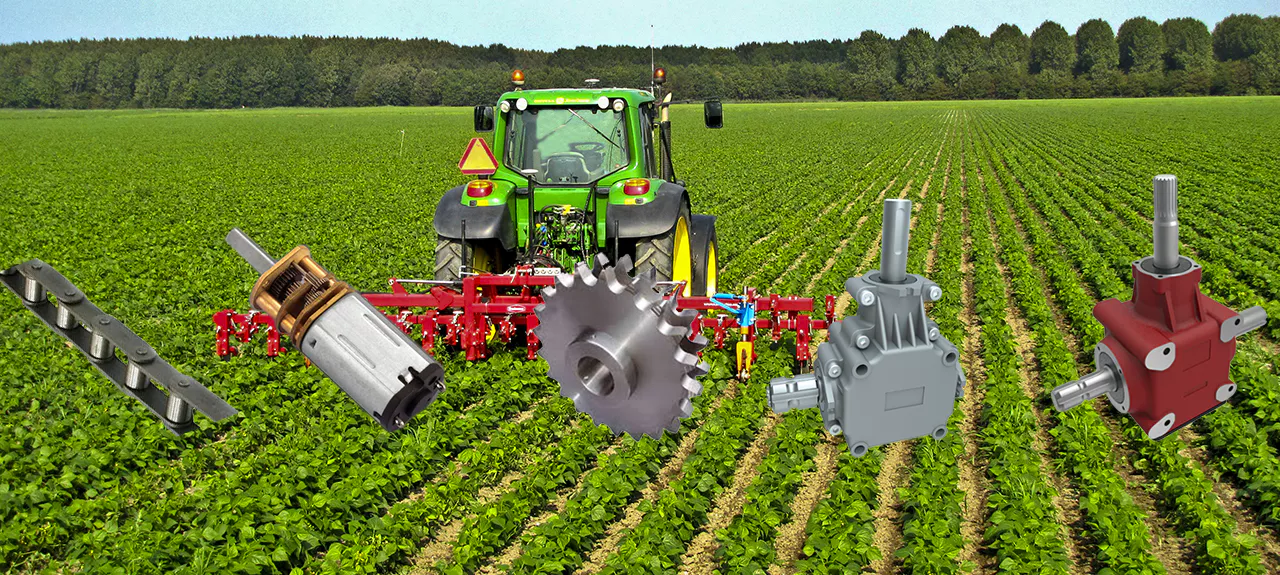
Agricultural Parts and How They Work
The term “agricultural parts” covers many different mechanical devices used in agriculture. Agricultural machinery includes power tools, tractors, and countless other farm implements. Aside from these, it also covers hand tools. Here are some common examples of agricultural parts. Read on to learn more. Below are some common parts and how they work. If you own a tractor, consider purchasing a new set of agricultural parts. Just-in-time delivery is an excellent option for a quick turnaround on parts and components.
Steel
Steel agricultural parts are used in the production of many types of agricultural machinery. They are used in tractors, combine harvesters, balers, mowers, and more. Because of the high wear resistance and tensile strength of steel, these parts require special properties. One such metal is CZPT. A short overview of this material is given below. To learn more about its benefits and application, read on. Here is a look at the qualities of CZPT.
Different steels are used for the housing of the Gearbox. Different manufacturers have different requirements. In addition to being lightweight and durable, steel agricultural parts must meet different material standards to perform their functions well. When choosing steel for your gearbox, keep these factors in mind. In addition to the weight and strength, you should also consider the type of gearbox. Gearbox housing is the first part that gets ruined in your tractor. If you buy a cheap steel housing, it will have poor quality.
Other benefits of steel include its resistance to chemical pesticides and its malleability. Steel also makes soil and dirt easier to wipe off. In addition to being corrosion-resistant, steel is also 100% recyclable. Its antimicrobial properties may also make it suitable for outdoor use. So, if you are looking for agricultural equipment parts, choose a steel farm machinery manufacturer. The benefits of steel agricultural parts are many. You can use them in the construction of various types of agricultural equipment.
Boron steel has many benefits in agricultural equipment. Boron steel is a good option for agricultural machinery parts, because of its high resistance to rust and corrosion. It is also very resistant to heat, which saves farmers a lot of time and money in replacing parts. In addition to its corrosion-resistant properties, boron steel also possesses great abrasion and heat resistance. It also is a good option for agricultural equipment that requires heavy loads.
Structural steel
Agricultural buildings made of structural steel are designed to hold livestock and agricultural equipment while remaining secure. These structures are lightweight and sturdy, offering a high level of thermal performance and insulation continuity. They are durable, sturdy, and rot/pest resistant, which makes them an excellent choice for many agricultural applications. Agricultural buildings made of structural steel can be easily customized, and you can choose from a variety of accessories, such as second-floor mezzanines, mansard systems, walk-through doors, and more. They can easily be altered to suit any renovation or change in business needs.
Today, high-strength steel is an excellent choice for structural parts in agricultural machinery. It allows agricultural equipment to withstand virtually any environmental condition, and its well-designed components increase reach and lifting capacity while maintaining strength and stability. As harvesters become more complex and cover more acres per hour, the need for reliable fabrication becomes increasingly more essential. In addition to harvesters, sprayers are a great example of tractors that make use of structural steel.
In addition to using structural steel for agricultural parts, agricultural tools are made from this metal, which reduces the construction time and waste by up to 30%. Many of these parts are made from structural steel, and a specialized company can provide you with the parts you need. For more information about industrial structural steel, please visit CZPT Fabricated Steel or visit their website. There are many advantages of using steel in agricultural parts.
In addition to the benefits of using structural steel in agricultural applications, agricultural equipment can be built using aluminum alloys and other lightweight metals. Aluminum alloys, for instance, are lighter than steel, which is a great benefit in terms of reducing the weight of farm machinery and soil. Additionally, aluminum alloys are harder than steel, which makes them the ideal choice for dust-filled environments. Further, agricultural equipment can be designed with composite materials and can be made of aluminum or manganese.
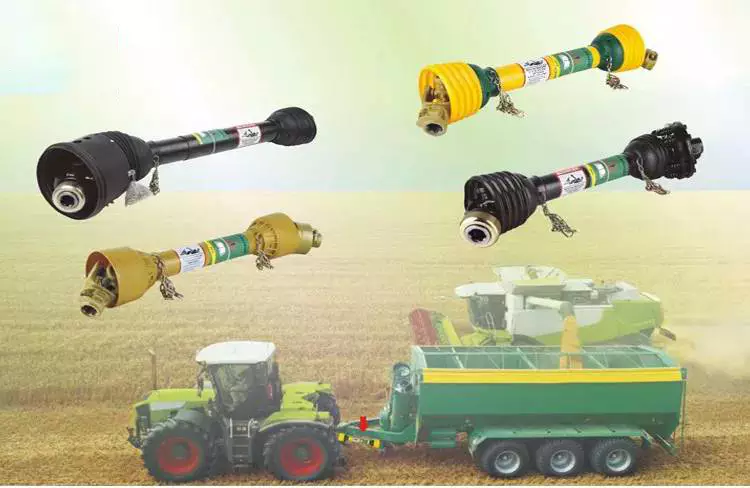
Torsional dampers
If you’re in the market for a new torsional damper, the best solution might be a bolt-on unit. These units are based on steel spring damper technology, which is also used in clutch disks. They are resistant to temperature-induced aging processes. ZF’s solution, DynaDamp, utilizes the same technology as its Dual Mass Flywheel. There are several different sizes available to match the horsepower output of your tractor.
New regulations for tractors have increased demand for torsion control and dampers. Agricultural equipment, such as tractors, is being forced to use cleaner engines to reduce emissions. A torsional damper prevents vibration from spreading throughout the transmission and the rest of the vehicle. These parts can also come in straight spring and arc spring designs. Those with straight springs are the most common, while arc springs are used in agricultural applications.
CZPT agricultural parts are designed to meet the technical demands of today’s tractors. Agricultural parts, such as clutch disks, require a high level of protection against torsional vibration. CZPT torsional dampers reduce vibration in the power train, protecting engine components and reducing operator fatigue. CZPT torsional dampers offer low cost and high-performance solutions that can handle any drivetrain application.
Voith CZPT torsional vibration dampers provide hydraulic damping for drive train vibrations and isolation. These units are maintenance-free and can protect against overloads and extend the service life of all components. The CZPT has three series – engine torques up to 3,700 Nm; vehicle-specific; and application-specific. For the ultimate in performance and dependability, Voith CZPT is the only choice.
Just-in-time delivery
Just-in-time delivery of agricultural parts has become a widely used practice throughout industries. In agricultural production, for example, inputs for implements were in trucks on the day of their delivery and would be delivered to the farm at precisely the right time. This process has become widespread, reducing the need for costly inventories and lowering production, storage, and purchase costs for end-users. Here are five examples of how it can help farmers and other businesses.
A typical tractor has over 1,700 components. Increasing competition among automakers has forced manufacturers to move toward just-in-time delivery of agricultural parts. However, this approach fails if a single part fails to deliver the desired results. Farmers have had problems with shaft breaks in their planters, for instance. By using just-in-time delivery, these dealers avoid the problems associated with a last-minute purchase and focus on making the equipment work properly.
A major challenge of this type of supply chain is predicting demand. While JIT delivery can significantly reduce costs, the difficulty of predicting demand is significant. Suppliers must be able to deliver parts in time, ensuring maximum profitability. Agricultural companies must ensure that their suppliers understand demand and have good relationships with their customers. In this way, the cost of inventory management is reduced. And a single, well-designed supply chain can reduce costs.
In order to implement just-in-time delivery, businesses must be able to identify what customers need and how quickly they can supply it. Without such a service, companies may face huge risks. They may have to sacrifice supply, certain products, or entire customer bases. These costs cannot be measured and are therefore unwelcome by many companies. However, JIT can help improve profitability and market share. A comprehensive logistics provider such as CZPT will provide operational procedures and resources for implementing JIT in a business.
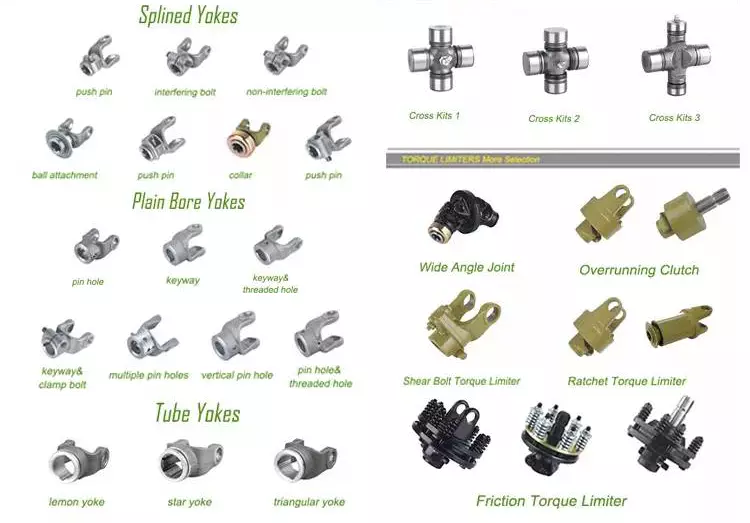
Precision-based tech
Agricultural production is increasingly relying on technology for the benefit of farmers and their crops. The underlying science behind precision farming uses computer software and sensors to detect and improve soil conditions. With nearly 475 million farm households around the world, precision agriculture is important, as many of these operations are small and lack resources. The technology is also relevant to farms in developed countries that employ large production systems. However, implementing precision farming may be too expensive for small farms.
The goal of precision agriculture is to increase crop productivity and efficiency while protecting the environment. The use of technology helps farmers make better decisions on when to plant their crops, which can improve yield and quality, as well as cut greenhouse gas emissions. By incorporating precision technology into farming, farmers can use data from the field to plan for the future. Precision agriculture can be used in large and small fields. Precision farming can also help farmers monitor and optimize soil conditions and apply fertilizer at the proper time.
Agricultural equipment must be able to communicate with each other. With the help of machine learning and artificial intelligence, companies can process billions of data points and find meaningful patterns and drivers. This technology is particularly suited to precision agriculture, as data points from the field can include a wide range of environmental factors, including water levels and soil conditions. When smart computer algorithms analyze all this data, they can make intelligent recommendations on crop yield and quality.
Using precision technology for agricultural operations is essential for maximizing crop yield and quality. It can save time and money by optimizing irrigation systems, minimizing crop damage, and improving production. Precision technology can also help farmers reduce the amount of resources used to produce a particular crop. A small farmer can increase the output of a crop while minimizing waste and maximizing profits. With the use of these technologies, farming can be more productive and environmentally sustainable.


editor by czh 2023-06-27